
Vatnajökull National Park: Iceland's Majestic Glacier Wonderland
Explore Vatnajökull National Park: Iceland's largest glacier, stunning ice caves, volcanic wonders, and diverse wildlife await in this natural paradise.
Vatnajökull National Park, located in the southeast of Iceland, is a stunning expanse of natural beauty and wonder. The park is home to Vatnajökull, Europe's largest glacier by volume, covering an area of approximately 8,100 square kilometers. The diverse landscape includes glacial tongues, ice caves, active volcanoes, and geothermal areas, making it a paradise for nature enthusiasts and adventure seekers alike. The park is divided into several regions, each offering unique experiences. Skaftafell, a popular area within the park, boasts lush green valleys, striking waterfalls such as Svartifoss, and challenging hiking trails. The breathtaking Jökulsárlón glacier lagoon, where icebergs float serenely, provides an unforgettable experience for visitors. The lagoon is also a prime location for spotting seals and diverse birdlife. Vatnajökull National Park is not only about glaciers and ice. It is also rich in volcanic features, with craters, lava fields, and geothermal springs dotting the landscape. The volcanic activity beneath the glacier creates a dynamic environment, leading to fascinating natural phenomena like ice cauldrons and glacier floods. This ever-changing scenery makes each visit to the park a unique adventure. Whether you are interested in hiking, ice climbing, glacier tours, or simply soaking in the awe-inspiring vistas, Vatnajökull National Park offers an array of activities to suit all interests. Its unparalleled beauty and diverse ecosystems make it a must-visit destination for anyone traveling to Iceland.
Local tips in Vatnajokull National Park
- Visit during summer for more accessible trails and longer daylight hours.
- Book glacier tours and ice cave explorations in advance due to high demand.
- Wear sturdy hiking boots and layered clothing to adapt to changing weather.
- Be prepared for limited cell service in remote areas of the park.
- Check weather conditions and park alerts before heading out.
Vatnajökull National Park: Iceland's Majestic Glacier Wonderland
Vatnajökull National Park, located in the southeast of Iceland, is a stunning expanse of natural beauty and wonder. The park is home to Vatnajökull, Europe's largest glacier by volume, covering an area of approximately 8,100 square kilometers. The diverse landscape includes glacial tongues, ice caves, active volcanoes, and geothermal areas, making it a paradise for nature enthusiasts and adventure seekers alike. The park is divided into several regions, each offering unique experiences. Skaftafell, a popular area within the park, boasts lush green valleys, striking waterfalls such as Svartifoss, and challenging hiking trails. The breathtaking Jökulsárlón glacier lagoon, where icebergs float serenely, provides an unforgettable experience for visitors. The lagoon is also a prime location for spotting seals and diverse birdlife. Vatnajökull National Park is not only about glaciers and ice. It is also rich in volcanic features, with craters, lava fields, and geothermal springs dotting the landscape. The volcanic activity beneath the glacier creates a dynamic environment, leading to fascinating natural phenomena like ice cauldrons and glacier floods. This ever-changing scenery makes each visit to the park a unique adventure. Whether you are interested in hiking, ice climbing, glacier tours, or simply soaking in the awe-inspiring vistas, Vatnajökull National Park offers an array of activities to suit all interests. Its unparalleled beauty and diverse ecosystems make it a must-visit destination for anyone traveling to Iceland.
When is the best time to go to Vatnajokull National Park?
Iconic landmarks you can’t miss
Jökulsárlón Glacier Lagoon Boat Tours and Cafe
Discover the breathtaking beauty of Jökulsárlón Glacier Lagoon, where floating icebergs and stunning landscapes create an unforgettable Icelandic adventure.

Kerid Crater
Explore the breathtaking beauty of Kerid Crater, a must-see volcanic wonder in Iceland with stunning turquoise waters and dramatic landscapes.

Skógafoss
Discover the breathtaking beauty of Skógafoss, one of Iceland's most famous waterfalls, where nature's power meets stunning landscapes.

Strokkur Geyser
Discover the awe-inspiring Strokkur Geyser in Iceland, where nature's power erupts every few minutes in a spectacular display of boiling water.

Vatnajökull National Park
Explore the stunning landscapes of Vatnajökull National Park, Iceland's largest national park, featuring glaciers, waterfalls, and unique wildlife.

Svartifoss
Explore the breathtaking Svartifoss waterfall, framed by unique black basalt columns in Vatnajökull National Park, a true Icelandic natural wonder.

Diamond Beach
Experience the breathtaking beauty of Diamond Beach, where glacial icebergs meet black sands in an otherworldly landscape of nature's artistry.

Skaftafell
Discover the breathtaking landscapes of Skaftafell, a nature preserve in Iceland where waterfalls, glaciers, and hiking trails await every adventure seeker.

Jökulsárlón
Explore the breathtaking beauty of Jökulsárlón, Iceland's iconic glacial lagoon surrounded by stunning landscapes and unique wildlife.

Hálsanefshellir Cave
Uncover the stunning geological wonders of Hálsanefshellir Cave, an enchanting natural landmark in the heart of Iceland's breathtaking landscapes.

Tröll Expeditions Skaftafell
Explore the breathtaking glaciers of Vatnajökull National Park with Tröll Expeditions Skaftafell - a top choice for adventure seekers in Iceland.

Snæfellsjökull National Park
Explore the breathtaking natural beauty and rich history of Snæfellsjökull National Park, a stunning gem in Iceland's wilderness.

Fjallsárlón Iceberg Boat Tours
Embark on an unforgettable iceberg boat tour at Fjallsárlón, where stunning glaciers and serene waters create a breathtaking Icelandic adventure.

Sólheimajökull
Experience the breathtaking beauty of Sólheimajökull, Iceland's fourth largest glacier, perfect for adventurers and nature lovers alike.

Dettifoss
Discover Dettifoss, Iceland's most powerful waterfall, where nature's raw beauty and thundering waters create an unforgettable experience for every traveler.

Unmissable attractions to see
Kerid Crater
Discover the breathtaking beauty of Kerid Crater, an ancient volcanic lake renowned for its vibrant colors and stunning geological formations.

Svartifoss
Explore the breathtaking Svartifoss Waterfall, a stunning natural wonder in Iceland renowned for its unique basalt columns and picturesque hiking trails.
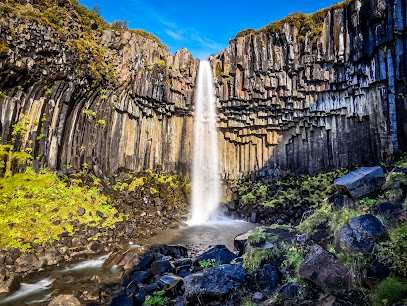
Diamond Beach
Explore the stunning Diamond Beach in Iceland, where shimmering icebergs meet black sands for an unforgettable natural spectacle.

Skaftafell
Explore the breathtaking landscapes and unique geological formations of Skaftafell National Park, a true gem in Iceland's natural beauty.
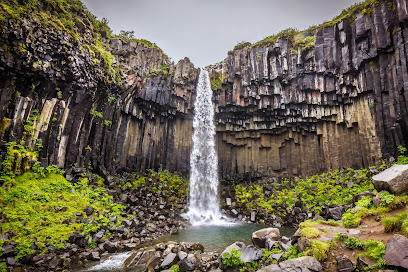
Stuðlagil Canyon Main Access
Explore the breathtaking Stuðlagil Canyon in East Iceland, known for its stunning basalt columns and vibrant blue waters, perfect for adventure and relaxation.

Jökulsárlón
Discover the breathtaking beauty of Jökulsárlón, Iceland's iconic glacial lagoon, where stunning icebergs meet serene landscapes.

Tröll Expeditions Skaftafell
Experience the breathtaking glaciers of Iceland with Tröll Expeditions Skaftafell – an unforgettable adventure awaits you in nature's wonderland.

Sólheimajökull
Discover the breathtaking beauty of Sólheimajökull, Iceland's majestic glacier, and experience its stunning landscapes and unique ice formations.

Yoda Cave
Explore the enchanting Yoda Cave in Iceland, a unique natural wonder offering stunning landscapes and mystical rock formations.

Stokksnes
Discover the stunning landscapes and breathtaking beauty of Stokksnes, Iceland's hidden gem featuring majestic mountains and serene beaches.
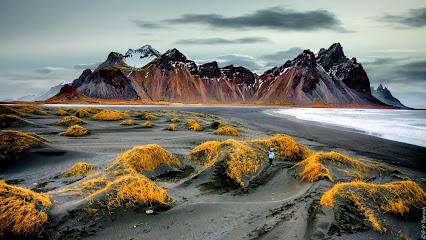
Þórufoss
Discover the breathtaking beauty of Þjórsárfoss, a stunning waterfall that showcases Iceland's majestic landscapes and natural wonders.

Nykurhylsfoss (Sveinsstekksfoss)
Discover the breathtaking Nykurhylsfoss waterfall in Djupivogur, a serene escape into Iceland's stunning natural beauty and tranquility.

Fjallabak Nature Reserve
Discover the stunning landscapes and rich wildlife of Fjallabak Nature Reserve, a true gem in Iceland's wilderness offering unforgettable adventures.

Glacier Adventure
Explore the breathtaking glaciers of Iceland with Glacier Adventure, offering unforgettable tours and experiences in Vatnajökull National Park.

Stjórnarfoss
Discover the serene beauty of Stjornarfoss, a hidden waterfall gem in Iceland surrounded by breathtaking landscapes and tranquility.

Essential places to dine
Fosshotel Glacier Lagoon
Experience luxury at Fosshotel Glacier Lagoon—your ideal base for exploring Iceland's stunning glaciers and natural wonders.

Fjallsárlón Iceberg Boat Tours
Discover breathtaking glacial landscapes at Fjallsárlón Iceberg Boat Tours – an unforgettable Icelandic adventure amidst towering icebergs.

Mia's Country Van - Local Fish & Chips
Experience the best fish & chips at Mia's Country Van in Hvolsvöllur - fresh, delicious, and uniquely Icelandic.

Geysir Glima restaurant
Discover authentic Icelandic cuisine at Geysir Glima restaurant near the famous geothermal area – where nature meets fine dining.
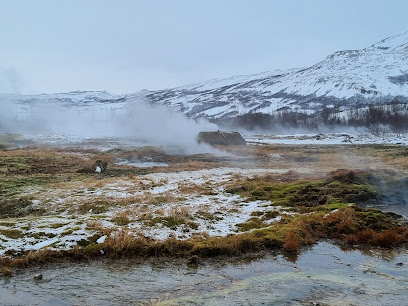
Ishusid Pizzeria Restaurant
Discover Ishusid Pizzeria in Höfn: Savor delicious pizzas and fresh seafood amidst breathtaking Icelandic landscapes.

Bjargarsteinn Mathús
Experience authentic Icelandic cuisine at Bjargarsteinn Mathús with stunning views and exceptional service in Grundarfjörður.

Veitingasala Restaurant, Shop, And Gas
Discover authentic Icelandic flavors at Veitingasala Restaurant in Svínafell—where hearty meals meet warm hospitality amidst stunning landscapes.

Hali Country Hotel & Restaurant
Discover authentic Icelandic hospitality at Hali Country Hotel & Restaurant - your gateway to stunning landscapes and local cuisine.

Stapinn
Discover Stapinn in Arnarstapi: Enjoy authentic Icelandic cuisine with breathtaking coastal views.

Cafe Vatnajökull
Discover the unique blend of art and flavor at Cafe Vatnajökull – an inviting cafe nestled in Iceland's stunning Öræfi region.

Fosshotel Vatnajökull
Discover breathtaking glacier views and authentic Icelandic hospitality at Fosshotel Vatnajökull in Höfn.

Þórbergssetur - Cultural Center & Restaurant
Experience Iceland's rich literary heritage and savor authentic cuisine at Þórbergssetur - where culture meets culinary delight.
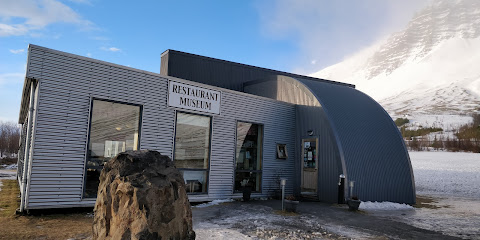
Fjallsárlón Frost Restaurant
Experience authentic Icelandic cuisine at Fjallsárlón Frost Restaurant with breathtaking views of glaciers and nature's beauty.

Jon Riki
Discover authentic Icelandic flavors at Jon Riki in Höfn – a culinary delight amidst breathtaking landscapes.

Saatvik Restaurant (Kaffiterían Skaftafelli)
Discover Icelandic flavors at Saatvik Restaurant amidst stunning landscapes near Höfn.

Markets, malls and hidden boutiques
Jökulsárlón Glacier Lagoon Boat Tours and Cafe
Explore the enchanting Jökulsárlón Glacier Lagoon, where shimmering icebergs meet pristine waters in a stunning Icelandic landscape.

Vatnajökull National Park
Experience the breathtaking beauty of Vatnajökull National Park, home to Europe's largest glacier and stunning natural landscapes.

Skaftafell
Discover the stunning landscapes, hiking trails, and unique glaciers of Skaftafell, a breathtaking nature preserve in Vatnajökull National Park, Iceland.

Stuðlagil Canyon Main Access
Discover the breathtaking beauty of Stuðlagil Canyon, where stunning basalt columns meet vibrant turquoise waters in a natural wonderland.

Fjallsárlón Iceberg Boat Tours
Discover the enchanting beauty of Iceland's glaciers with unforgettable boat tours at Fjallsárlón Iceberg Lagoon.

Svínafellsjökull Glacier
Discover the breathtaking beauty of Svínafellsjökull Glacier in Vatnajökull National Park, where adventure meets serene landscapes in Iceland.

Veitingasala Restaurant, Shop, And Gas
Experience authentic Icelandic cuisine and warm hospitality at Veitingasala Restaurant, the heart of Svínafell dining.

Glacier Adventure
Experience the breathtaking beauty of Iceland with Glacier Adventure, your gateway to unforgettable glacier tours and thrilling outdoor activities.
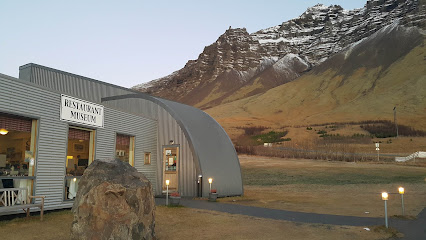
Cafe Vatnajökull
Discover Café Vatnajökull: an artful café near Vatnajökull National Park, serving fresh pastries and coffee in a stunning natural setting.

Fosshotel Vatnajökull
Discover the stunning landscapes and warm hospitality at Fosshotel Vatnajökull, your gateway to Icelandic adventures.

Vatnajokull
Discover the breathtaking beauty of Vatnajökull, Europe's largest glacier, and experience Iceland's stunning natural landscapes and thrilling outdoor adventures.

Skaftafellsstofa
Discover breathtaking landscapes and rich history at Skaftafellsstofa Visitor Center, your gateway to Vatnajökull National Park's natural wonders.

Glacier World Guesthouse
Discover the serene beauty of Iceland at Glacier World Guesthouse, your cozy bed and breakfast surrounded by majestic glaciers and breathtaking landscapes.

Gljúfrastofa - Ásbyrgi Visitor Centre
Experience the breathtaking beauty of Iceland at Gljúfrastofa - Ásbyrgi Visitor Centre, an essential stop for nature lovers and adventure seekers.

Melrakki Adventures
Unearth the stunning beauty of Iceland’s glaciers with Melrakki Adventures, your gateway to spectacular glacier hikes and unforgettable experiences.

Essential bars & hidden hideouts
Vatnajökull National Park
Discover the awe-inspiring landscapes and unique ecosystems of Vatnajökull National Park, Iceland's premier destination for nature lovers and adventurers alike.

Skaftafell
Discover the natural beauty of Skaftafell, a stunning preserve within Vatnajökull National Park, ideal for hiking, photography, and exploring Iceland's unique landscapes.
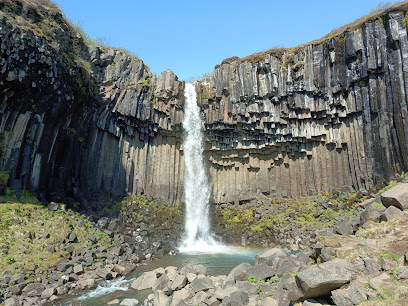
Fosshotel Glacier Lagoon
Experience the stunning landscapes of Iceland at Fosshotel Glacier Lagoon with modern comforts and exceptional dining in a serene setting.

Fjallsárlón Iceberg Boat Tours
Experience the breathtaking beauty of Fjallsárlón Iceberg Boat Tours, where stunning glaciers and floating icebergs await your adventure.

Mia's Country Van - Local Fish & Chips
Discover the authentic taste of Icelandic fish and chips at Mia's Country Van, a charming fast-food experience in Hvolsvöllur.

Ishusid Pizzeria Restaurant
Experience the best of Höfn at Ishusid Pizzeria, where artisanal pizzas and fresh seafood meet stunning coastal views.

Svínafellsjökull Glacier
Discover the stunning Svínafellsjökull Glacier, a breathtaking glacial tongue in Vatnajökull National Park, perfect for hiking and photography.

Veitingasala Restaurant, Shop, And Gas
Experience authentic Icelandic cuisine at Veitingasala Restaurant in Svínafell, where stunning scenery meets delightful flavors.

Hali Country Hotel & Restaurant
Experience the serenity and culinary delights at Hali Country Hotel & Restaurant, your perfect base for exploring Iceland's breathtaking landscapes.

Hotel Skaftafell
Experience the heart of Iceland at Hotel Skaftafell, a cozy retreat near breathtaking landscapes and adventure-filled opportunities.

Bravó
Experience the vibrant nightlife of Reykjavík at Bravó, a cocktail bar famous for its live music, exquisite drinks, and welcoming atmosphere.
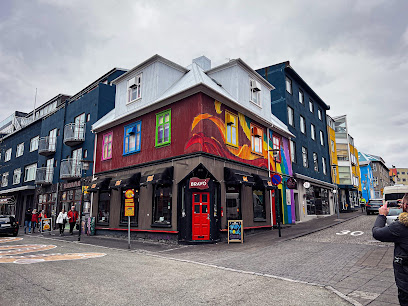
Glacier Adventure
Discover the breathtaking beauty of Iceland's glaciers with Glacier Adventure, offering unforgettable tours and experiences in Höfn's stunning landscapes.

Skogafoss Bistro Bar
Experience the flavors of Iceland at Skogafoss Bistro Bar, where culinary delights meet breathtaking views near the iconic Skogafoss waterfall.

Kaffibarinn
Discover the warmth of Kaffibarinn, a beloved bar in Reykjavik offering a cozy atmosphere and a wide range of drinks to enjoy.

Magic Ice Reykjavík - Ice Bar & Gallery
Experience the unique fusion of art and nightlife at Magic Ice Reykjavík — an enchanting ice bar and gallery in the heart of Iceland's capital.

Local Phrases about Vatnajokull National Park
-
- HelloHalló
[ha-lo] - GoodbyeBless
[bles] - YesJá
[ya] - NoNei
[nay] - Please/You're welcomeGjörðu svo vel
[gyor-thu svo vel] - Thank youTakk fyrir
[tahk fi-rir] - Excuse me/SorryAfsakið
[af-sa-kith] - How are you?Hvernig hefur þú það?
[kver-nik hev-ur thu thahd] - Fine. And you?Fínt. Og þú?
[feent ohk thu] - Do you speak English?Talar þú ensku?
[ta-lar thu en-skoo] - I don't understandÉg skil ekki
[yeh skil ek-ki]
- HelloHalló
-
- I'd like to see the menu, pleaseÉg ætla að sjá valmyndina, takk
[yeh eye-tla ath shah val-mun-dee-na takk] - I don't eat meatÉg borða ekki kjöt
[yeh bor-tha ek-ki chot] - Cheers!Skál!
[skowl] - I would like to pay, pleaseÉg vil greiða, takk
[yeh vil gray-tha takk]
- I'd like to see the menu, pleaseÉg ætla að sjá valmyndina, takk
-
- Help!Hjálp!
[hyowlp] - Go away!Farðu í burtu!
[far-thu ee bur-too] - Call the Police!Hringdu í lögregluna!
[hring-thu ee luh-gre-gluna] - Call a doctor!Hringdu í lækninn!
[hring-thu ee leyk-neen] - I'm lostÉg er týndur
[yeh er teen-dur] - I'm illÉg er veikur
[yeh er vey-kur]
- Help!Hjálp!
-
- I'd like to buy...Mig langar að kaupa...
[mig lang-ar ath koy-pa] - I'm just lookingÉg er bara að skoða
[yeh er bara ath sko-tha] - How much is it?Hvað kostar það?
[kvath koh-star thahd] - That's too expensiveÞað er of dyrt
[thath er ohf deert] - Can you lower the price?Getur þú lækkar verðið?
[geth-ur thu ley-kar ver-thith]
- I'd like to buy...Mig langar að kaupa...
-
- What time is it?Hvað er klukkan?
[kvath er klu-khan] - It's one o'clockKlukkan er eitt
[klu-khan er ayt] - Half past (10)Hálf tíu
[howlf tee-oo] - MorningMorgun
[mor-gun] - AfternoonSíðdegis
[seeth-day-gis] - EveningKvöld
[kvohld] - YesterdayÍ gær
[ee gai-r] - TodayÍ dag
[ee dahg] - TomorrowÁ morgun
[ow mor-gun] - 1Eitt
[ayt] - 2Tvö
[tvo] - 3Þrjú
[thryoo] - 4Fjögur
[fyoh-gur] - 5Fimm
[fimm] - 6Sex
[sehx] - 7Sjö
[syoh] - 8Átta
[ow-tha] - 9Níu
[nee-oo] - 10Tíu
[tee-oo]
- What time is it?Hvað er klukkan?
-
- Where's a/the...?Hvar er...
[kvar er] - What's the address?Hvað er heimilisfangið?
[kvath er hay-mee-lees-fan-gith] - Can you show me (on the map)?Getur þú sýnt mér (á korti)?
[geth-ur thu seent meer oh korti] - When's the next (bus)?Hvenær er næsta (strætisvagn)?
[kver-nai-r er nye-sta strait-is-vagn] - A ticket (to ....)Miða (til ....)
[mee-tha til]
- Where's a/the...?Hvar er...
History of Vatnajokull National Park
-
Vatnajökull, the largest glacier in Europe, was formed during the last Ice Age, approximately 2,500 to 3,000 years ago. The glacier spans over 8,100 square kilometers and covers about 8% of Iceland's total landmass. It was created through the accumulation of snow and ice, compacted over centuries, and shaped by volcanic activity beneath its icy surface.
-
The Settlement Era in Iceland, dating from 874 to 930 AD, saw the arrival of Norse settlers. These early inhabitants were drawn to the fertile lands surrounding Vatnajökull despite the harsh climate. They established farms and communities at the glacier's periphery, relying on the natural resources and geothermal activity for survival.
-
Skeiðarársandur, a vast glacial outwash plain, is notable for its frequent jökulhlaups or glacial floods. These floods occur when geothermal heat or volcanic activity melts the glacier's ice, releasing massive amounts of water. One of the most significant jökulhlaups occurred in 1996, following the eruption of the Grímsvötn volcano beneath Vatnajökull, leading to extensive flooding and changes in the landscape.
-
Grímsvötn, one of Iceland's most active volcanoes, is located beneath the Vatnajökull glacier. It has erupted multiple times throughout history, with significant eruptions recorded in 1902, 1934, 1998, 2004, and 2011. These eruptions have had profound impacts on the glacier's structure and the surrounding environment, contributing to the dynamic nature of the landscape.
-
Vatnajökull National Park was established on June 7, 2008, to protect the unique geological features, ecosystems, and cultural heritage of the region. The park encompasses an area of approximately 14,141 square kilometers, making it one of the largest national parks in Europe. It includes the entirety of the Vatnajökull glacier and surrounding areas, offering visitors the opportunity to explore diverse landscapes and witness the interplay between ice and volcanic activity.
-
Skaftafell, a preservation area within Vatnajökull National Park, is renowned for its stunning landscapes and historical significance. It was originally established as a national park in 1967 before becoming part of the larger Vatnajökull National Park. Svartifoss, or 'Black Falls,' is one of Skaftafell's most iconic features, famous for its striking basalt column formations that have inspired Icelandic architecture.
-
The construction of the Ring Road (Route 1) around Iceland in the mid-20th century significantly boosted tourism in the Vatnajökull region. The road provided easier access to remote areas, including the national park, attracting visitors eager to experience the glacier's majesty, the volcanic landscapes, and the unique flora and fauna. This surge in tourism has contributed to the local economy and increased awareness of the importance of conservation.
-
Vatnajökull and its surroundings are steeped in Icelandic folklore and cultural heritage. Tales of hidden people, trolls, and other mythical beings are woven into the fabric of the region's history. The glacier itself is often personified in local legends, reflecting the deep connection between the people and the natural world. This rich cultural heritage is preserved and celebrated within the national park, offering visitors a glimpse into Iceland's storied past.
Vatnajokull National Park Essentials
-
Vatnajökull National Park is located in the southeastern part of Iceland. The nearest international airport is Keflavík International Airport (KEF), approximately 320 kilometers away. From Keflavík, you can rent a car and drive to the park, a journey that takes around 4-5 hours via Route 1 (the Ring Road). Alternatively, you can take a domestic flight from Reykjavík Airport to Egilsstaðir or Höfn and then drive to the park. Bus services are also available from Reykjavík to various points near the park.
-
Once inside Vatnajökull National Park, transportation options include rental cars, guided tours, and hiking. Rental cars provide the most flexibility, allowing you to explore the park at your own pace. Guided tours are available for specific attractions like glacier hikes and ice cave tours. Note that some areas may require a 4x4 vehicle. Public transportation within the park is limited, so plan your route and transportation in advance.
-
The official currency in Iceland is the Icelandic Króna (ISK). Credit cards are widely accepted throughout the country, including in Vatnajökull National Park. It is advisable to carry some cash for smaller establishments and remote locations that may not accept cards. ATMs are available in nearby towns such as Höfn and Egilsstaðir.
-
Vatnajökull National Park is generally safe for tourists. However, natural hazards like rapidly changing weather, glaciers, and volcanic areas require caution. Always follow marked trails and heed safety warnings. There are no specific high-crime areas targeting tourists, but standard precautions such as keeping an eye on your belongings are advisable. Avoid walking alone in remote areas without proper preparation.
-
In case of emergency, dial 112 for immediate assistance. The park is equipped with emergency shelters and information points. It is recommended to have travel insurance that covers medical emergencies and adventure activities. For minor health issues, there are pharmacies in nearby towns like Höfn and Egilsstaðir. Always inform someone of your travel plans, especially if hiking alone.
-
Fashion: Do wear layers and waterproof clothing. Avoid cotton as it retains moisture. Religion: Do respect local customs and traditions, although Iceland is predominantly secular. Public Transport: Do plan your trips in advance as public transport is limited. Greetings: Do greet locals with a friendly 'hello' or 'hæ'. Eating & Drinking: Do try local delicacies like skyr and lamb. Don't litter; always carry your trash with you.
-
To experience Vatnajökull National Park like a local, spend time in smaller villages like Höfn and Skaftafell. Engage with local guides to learn about the region's history and geology. Visit during off-peak seasons (late spring or early autumn) to enjoy fewer crowds and more serene landscapes. Participate in local activities like fishing or bird watching to gain a deeper appreciation of the area's natural beauty.
-
The best time to visit Vatnajökull National Park is during the summer months (June to August) when the weather is milder, and most trails and attractions are accessible. However, winter (November to February) offers unique opportunities to explore ice caves and witness the Northern Lights. Each season has its own set of activities and experiences, so plan your visit based on your interests.
-
Accommodation options near Vatnajökull National Park range from camping sites and guesthouses to hotels and lodges. Popular places to stay include Skaftafell, Höfn, and Egilsstaðir. Booking in advance is recommended, especially during the peak summer season. Some accommodations offer packages that include guided tours and activities.
Trending Landmarks in Vatnajokull National Park
Nearby Cities to Vatnajokull National Park
-
Things To Do in Husavik
-
Things To Do in Egilsstadir
-
Things To Do in Dalvik
-
Things To Do in Saudarkrokur
-
Things To Do in Seydisfjordur
-
Things To Do in Blonduos
-
Things To Do in Vik
-
Things To Do in Selfoss
-
Things To Do in Hveragerdi
-
Things To Do in Borgarnes
-
Things To Do in Kopavogur
-
Things To Do in Reykjavik
-
Things To Do in Hafnarfjordur
-
Things To Do in Stykkisholmur
-
Things To Do in Keflavik













